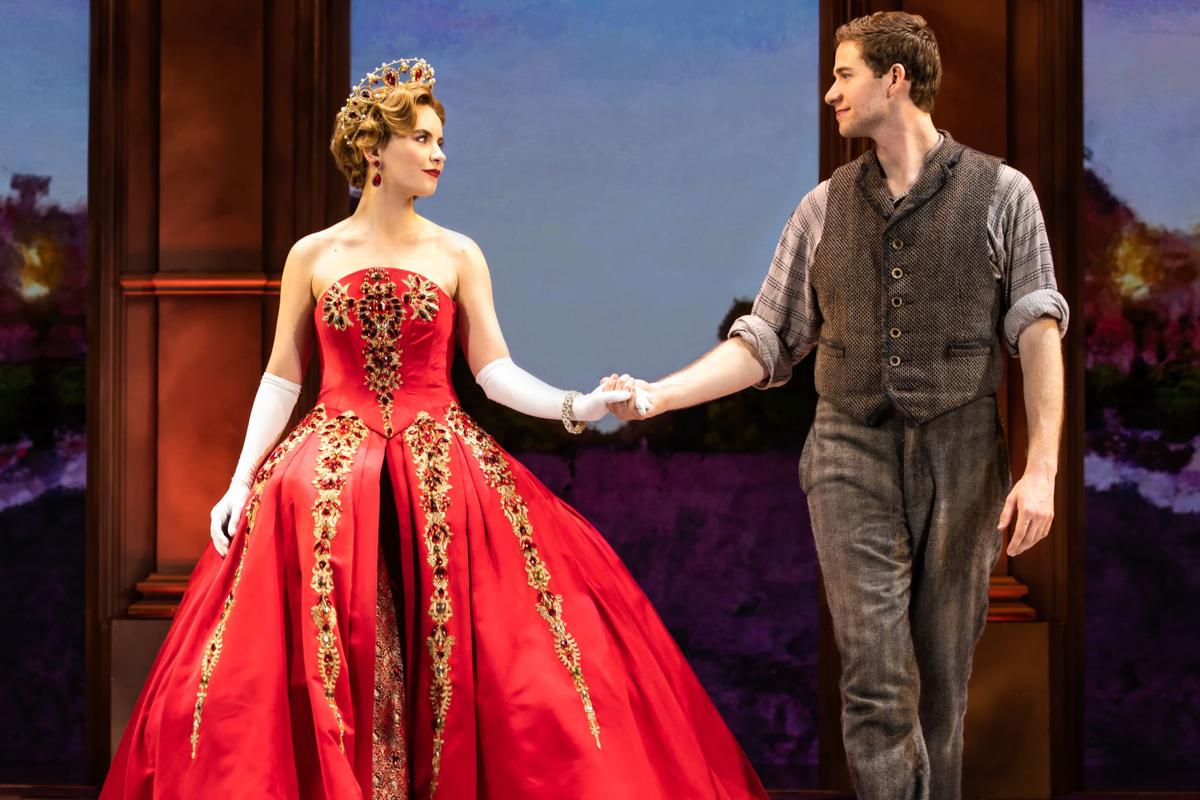“Anastasia” starts with the Russian revolution and the slaughter of the Romanov family in 1918.
With the use of multimedia, we see flames rising, soldiers charging and bombs exploding. It’s quite dramatic.
Yet the musical never quite meets the drama of that opening scene. Broadway in Tucson has brought the roadshow of the Broadway production to Centennial Hall.
The musical is adapted from the 1997 animated film and the 1956 movie starring Ingrid Bergman. Lots of source material there.
The stage production has dispensed with the evil Rasputin and his assistant, Bartok the bat, from the animated film.
But we’ve got Gleb (Jason Michael Evans), who is determined to finish the job his father started and kill Anastasia, who somehow escaped the horrible fate her family met (apparently, his father is one of those who pulled the trigger at the assassinations).
Ah, but who is this beautiful young woman he meets and is attracted to? Is this street sweeper really the princess? She doesn’t know — she woke up in a hospital a few years later not remembering a darn thing. Not even her name, so the nurses dubbed her Anya.
But a couple of con men think she can pretend and they can collect the monetary reward her grandmother, now in Paris, offered after rumors surfaced that Anastasia had escaped. They give her a crash course on the Romanov family, and she surprises them when she throws in a few details they hadn’t taught her.
While the script is thin and roll-your-eyes predictable (surprising, as it was written by Terrence McNally of “Ragtime” fame), there are some sweet if not particularly memorable tunes by Stephen Flaherty and Lynn Ahrens (the songs were in the ’97 animated film). They also did the music for “Ragtime.”
The play has no tension, no plot points that build, no surprises.
And this cast, led by Lila Coogan as Anya/Anastasia, was fine but not wow-worthy.
A high point: a comic scene between Lily (Tari Kelly), a lady-in-waiting to the grandmother, and Vlad (Edward Staudenmayer), one of the con men hoping to snag the reward. Apparently the two have a past, which is humorously recounted in their duet, “The Countess and the Common Man.” The two together quickened the pace and elicited rolls of laughter.
The use of multimedia brought the audience from the Russian revolution to the streets of Paris. And while it often lacked the dimension that actual set pieces have, it succeeded in transporting us. Director Darko Tresnjak is known for his innovative approaches to theater and for the most part it worked here. Costume designer Linda Cho never missed a beat, whether she was dressing the Russian aristocracy or the garb of the revolutionists.
The near-capacity audience at the Nov. 19 opening — one happily filled with girls dressed up and dying to see the princess play — was primed to enjoy it. There was often prolonged applause after a number, and a quick standing ovation at the end.
That doesn’t mean it’s a good play, but it does mean the audience was having fun watching it.





